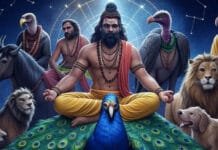In Hinduism, marriage is not just a social arrangement—it is a sacrament, one of the 16 sanskaras (rites of passage) that guide a person’s spiritual journey from birth to death. According to the scriptures, marriage is more than just a union of two souls—it’s a karmic bond that influences health, happiness, and destiny.
But while most people today focus only on kundli (horoscope) matching, many overlook ancient rules that are said to bring grave misfortune if violated.
Here’s a look at some important but lesser-known Vedic marriage guidelines that are still followed in many traditional households—and often ignored in urban weddings.
🚫 1. Don’t Marry Siblings Within a Year
It is strictly advised that the second marriage in a family—whether a son or daughter—should not happen within one year of the first marriage. Doing so is said to invite delays, misfortune, or unexpected sorrow in the family.
👬 2. Avoid Same-Day Marriage or Mundan for Twin Sons
If you have twin sons, their marriage or even their mundan ceremony (first haircut) should not be held on the same day. According to astrology, this can lead to health complications or emotional distress later in life.
👭 3. Two Sisters Must Not Marry Within 6 Months
The scriptures warn that if two daughters from the same womb are married within six months, it may bring calamity to one of them within three years. Families are advised to maintain a gap of at least six to twelve months between their marriages.
🗓️ 4. Never Marry in the Last Phase of the Calendar
Whether it’s the end of the year, month, date, or nakshatra, marriages done in the final phase of any time cycle are said to bring incomplete results or future regrets.
🎂 5. Avoid Wedding in One’s Birth Month or Birth Star
The marriage of the first child should never take place in their own birth month, on their birth star (nakshatra), or birthday. These timings may create energetic clashes and negative karmic patterns.
👩❤️👨 6. Age Factor: Even Years for Women, Odd Years for Men
Scriptures suggest that women should marry in even years (22, 24, 26…), and men in odd years (25, 27, 29…). Reversing this pattern may lead to instability in health or finances after marriage.
🪐 7. Pacify Malefic Planets Before Marriage
If either partner has malefic (inauspicious) planets in their birth chart, such as Mangal Dosha or Shani affliction, they must be pacified through proper rituals before the wedding. Otherwise, the marriage may suffer due to health, wealth, or emotional setbacks.
🌿 8. Nadi Dosha: A Silent Destroyer
When the bride and groom have the same Nadi, it is called Nadi Dosha, which can result in reduced lifespan or professional losses.
Adi Nadi harms the groom
Madhya Nadi harms the bride
Antya Nadi harms both
Hence, Nadi compatibility is crucial in kundli matching.
✨ 9. Nakshatra Exceptions in Nadi Dosha
If the bride and groom share the same Nakshatra, Nadi Dosha is nullified. Similarly, if they have same rashi but different nakshatras, or vice versa, the dosha doesn’t apply. Even a difference in nakshatra padas (phases) can exempt the couple from dosha effects.
🔚 Conclusion
Modern marriages may be evolving, but the wisdom of ancient scriptures continues to echo through time. Whether or not one believes in astrology, these rules have been followed for centuries across generations—not just as superstition, but as a spiritual safeguard.
When it comes to lifelong unions, even a little awareness can make a big difference.
















